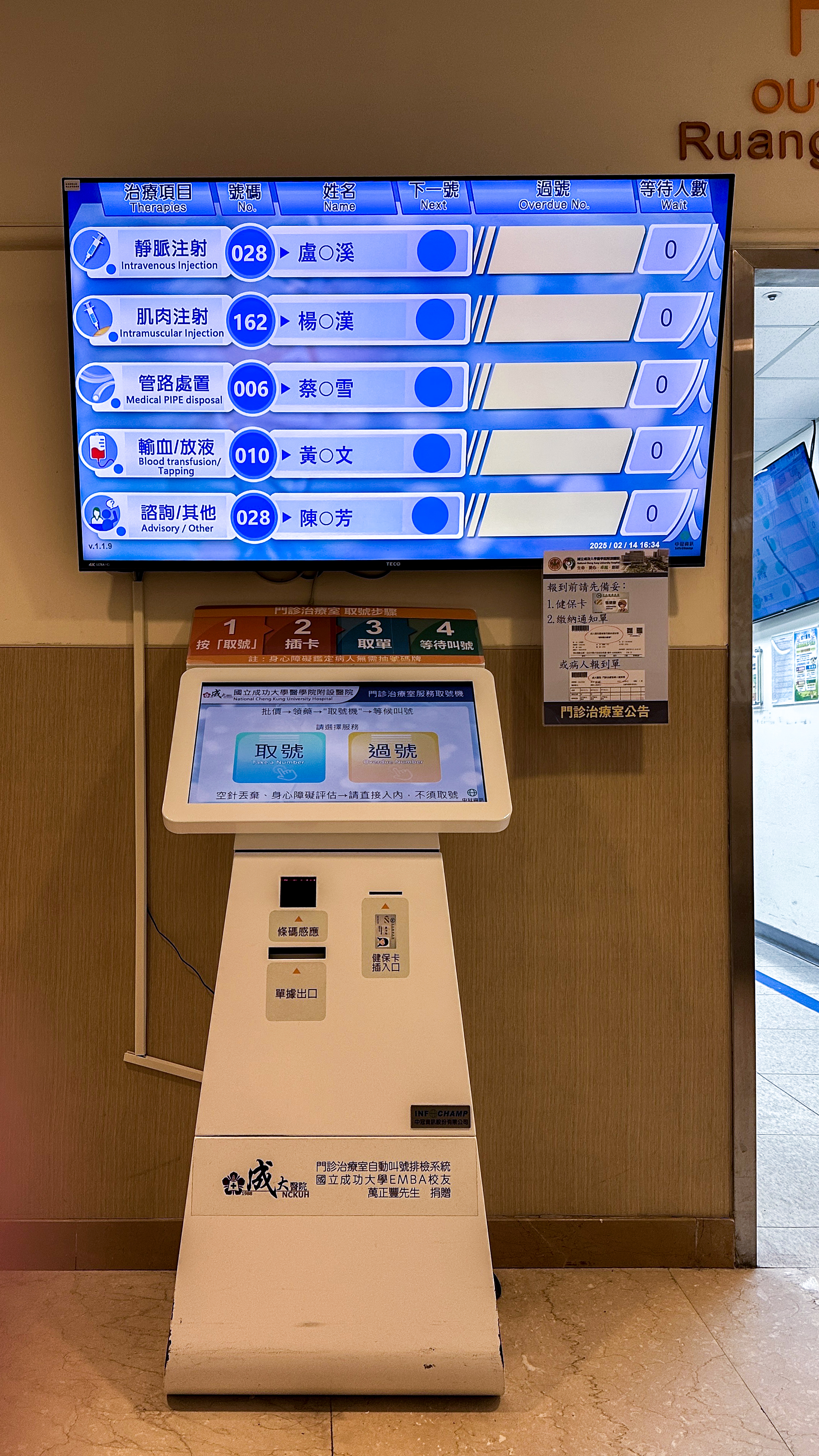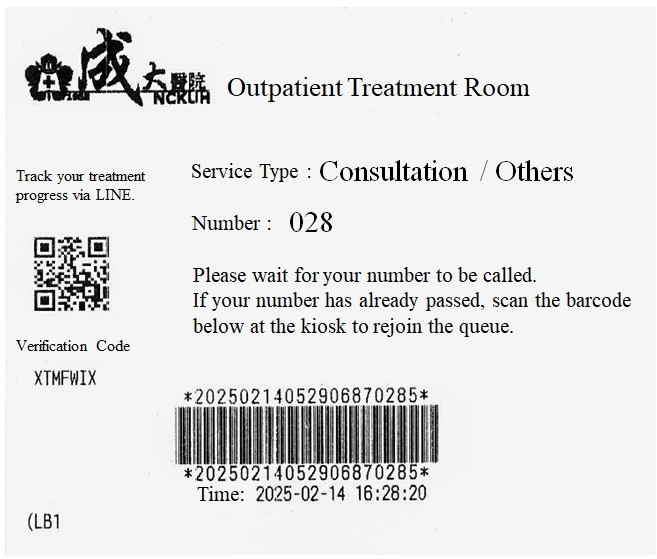Features of the Intelligent Queuing System
1. Optimized Treatment Classification Standard outpatient procedures are reclassified into five categories based on treatment duration and attributes. Each category is assigned to dedicated personnel, ensuring efficient workflow and clear role division.
2. Automated Classification and Sorting Using a "plug-and-print" strategy, the system automatically identifies medical procedure codes the clinic prescribes. It then assigns the appropriate category and queue order, eliminating patient’s need to determine their treatment type and reducing confusion. (Figure 1).
3. Transparent Queue Display A public information panel presents the waiting order, allowing patients to easily track their treatment progress at a glance (Figure 2).
4. Seamless Patient Calling System Nurses can call patients using official mobile phones, desktop computers, or laptops. Clear audio announcements ensure patients receive timely reminders to enter for treatment, significantly improving operational efficiency.
Improvements and Outcomes
1. Reduced Waiting Times and Increased Patient Satisfaction
◆The average patient waiting time decreased from 22 minutes to under 10 minutes.
◆Overall, patient satisfaction improved from 74.6% to 85.4%, with satisfaction regarding wait times increasing significantly from 51.1% to 80.7%.
2. Automated Monitoring of Wait Times and Satisfaction
◆After treatment, patients can complete a satisfaction survey via mobile devices or computers to provide real-time feedback.
◆The system automatically collects and analyzes patient wait times and satisfaction ratings.
3. Parallel Implementation and Benchmarking
◆The system has been successfully expanded to the Radiology Department. Patients can now scan their documents at the queuing machine and proceed directly to their designated imaging room, waiting outside as instructed.
◆The outpatient treatment room at NCKU Douliu Branch has also adopted the system as a benchmark, serving as a reference for future queuing system designs.

